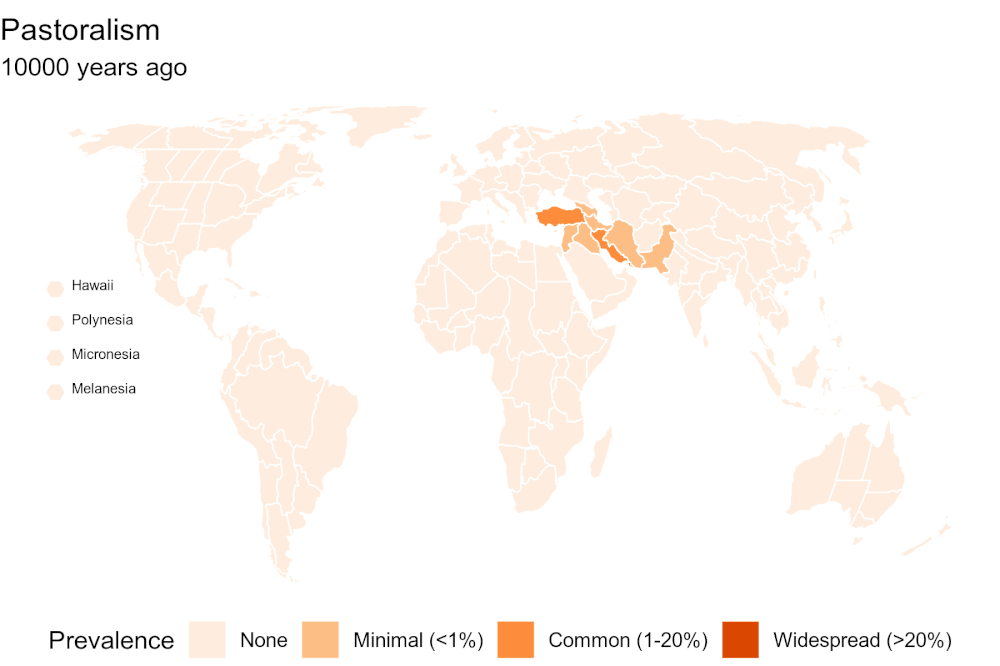Pastoralism is a “fundamental subsistence pattern that dates back over 10,000 years to the global warming that ended the Pleistocene Epoch” (Little 2015, 337). The map below shows the development of pastoralism as an agricultural system around the world, expanding to its maximum extent about 100 years ago.

The estimated number of pastoralists ranges from “120–200 million (including agro-pastoralists) worldwide, of which around 50 million reside in Sub-Saharan Africa: (Rass, 2006; IFAD, 2009; in Truebswasser and Flintan 2019, 310). While pastoralism is often seen as an outmoded and “anachronistic form of land use,” these views focus on land tenure issues (common vs. private lands) and not on the important niche these systems fill in sustainable agro-ecosystems, particularly those that do not support mechanized or large scale farming practices (e.g. arid, semi-arid and steep topography (Kaufmann, et al. 2019).
There are four types of pastoralism, dependent on the degree and scale of movement systems inherent in the regional practice:
- Nomadic: exclusive pastoralists migrating in an irregular manner to new pastures for grazing.
- Transhumant: exclusive pastoralists with regular back and forth migrations, such as semiannual vertical movements from highlands at the end of the summer to lowlands in the winter and then back.
- Agropastoral: both raising livestock and crops.
- Enclosed pastoralism (Scanes 2018).
